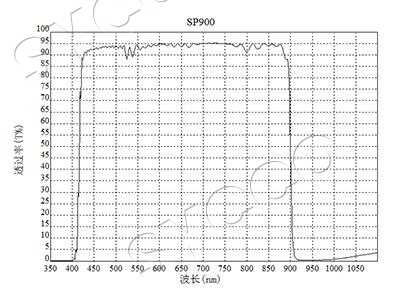Understanding Optical Glass Short Pass Filters: A Comprehensive Guide
In the realm of optical technologies, optical glass short pass filters play a crucial role in various applications, including photography, scientific research, and medical imaging. These filters, known for their ability to selectively transmit wavelengths of light below a certain cutoff while blocking longer wavelengths, are essential components in enhancing the precision and effectiveness of optical systems. This article delves into the intricacies of optical glass short pass filters, exploring their functionalities, applications, and the science behind their operation.
What are Optical Glass Short Pass Filters?
Optical glass short pass filters are specialized optical components designed to transmit light below a specific wavelength while attenuating longer wavelengths. These filters are typically manufactured from high-quality optical glass, which ensures minimal signal distortion and high transmission efficiency. The cutoff wavelength is the point at which the filter transitions from high transmission to significant attenuation, making these filters vital in applications requiring precise control of light.

How Optical Glass Short Pass Filters Work
The operation of optical glass short pass filters is based on the principles of interference and absorption. They are constructed with multiple layers of dielectric materials, each with varying refractive indices. When light passes through these layers, constructive and destructive interference occurs, allowing specific wavelengths to be transmitted while others are blocked. This multilayer construction is precisely engineered to achieve the desired cutoff wavelength with high accuracy.
Key Characteristics of Optical Glass Short Pass Filters
Cutoff Wavelength: The defining feature of these filters, the cutoff wavelength, is where the filter transitions from high transmission to blocking.
Transmission Efficiency: High-quality optical glass ensures minimal loss of transmitted light, maintaining the integrity of the signal.
Durability: Optical glass short pass filters are resistant to environmental factors, ensuring longevity and consistent performance.
Spectral Range: These filters can be tailored to operate across various spectral ranges, from ultraviolet to near-infrared.
Applications of Optical Glass Short Pass Filters
Optical glass filters find applications across multiple fields due to their ability to selectively transmit specific wavelengths. Below are some key areas where these filters are indispensable:
Photography and Imaging
In photography, short pass filters enhance image quality by blocking unwanted infrared light, which can cause color distortions. They are also used in night vision equipment to filter out visible light, allowing only infrared light to reach the sensor.
Scientific Research
Researchers utilize short pass filters in various scientific instruments to isolate specific wavelengths for analysis. In fluorescence microscopy, these filters are used to separate excitation light from emission light, improving the clarity and contrast of the images.
Medical Imaging
In medical imaging technologies, such as endoscopy and optical coherence tomography, optical glass short pass filters help in enhancing image contrast and detail by blocking out-of-band wavelengths that could degrade image quality.
Industrial Applications
In industrial settings, short pass filters are used in quality control systems to detect defects and contaminants by isolating specific wavelengths that highlight these issues. They are also employed in laser systems to protect sensors and other components from harmful wavelengths.
Advantages of Using Optical Glass Short Pass Filters
The utilization of optical glass short pass filters offers several advantages that enhance the performance and reliability of optical systems. Some of the primary benefits include:
Enhanced Signal Clarity
By selectively transmitting only the desired wavelengths, these filters improve the signal-to-noise ratio, resulting in clearer and more accurate data or images.
Further reading:What does hose mean in slang?
The Benefits of Using High Voltage Contact
Paper Troubleshooting Test
Improved System Efficiency
How Does Shrink Force and Ratio Tester Work?
The Advantages of Implementing Eco-Friendly Cleaning Products in Your Home
Ultrasonic Testing vs. Traditional Methods: Unveiling Key Differences
How Does the Science of Quantum Computing Work?
With high transmission efficiency, optical systems using short pass filters operate more effectively, as there is minimal loss of light intensity.
Versatility
Optical glass short pass filters are versatile and can be customized for different cutoff wavelengths and spectral ranges, making them suitable for a wide range of applications.
Durability and Stability
Constructed from high-quality optical glass, these filters are durable and stable, capable of withstanding harsh environmental conditions and maintaining performance over time.
Choosing the Right Optical Glass Short Pass Filter
Selecting the appropriate optical glass short pass filter requires consideration of several factors to ensure optimal performance for the intended application. Key considerations include:
Cutoff Wavelength
Determine the specific wavelength that needs to be transmitted and ensure the filter’s cutoff wavelength aligns with this requirement.
Transmission Efficiency
Consider the filter’s transmission efficiency at the desired wavelength to ensure minimal signal loss.
Material Quality
High-quality optical glass is essential for maintaining signal integrity and durability. Verify the material specifications to ensure it meets the necessary standards.
Environmental Resistance
Ensure the filter can withstand the environmental conditions of your application, including temperature variations, humidity, and exposure to chemicals or abrasives.
Maintenance and Care of Optical Glass Short Pass Filters
Proper maintenance and care of optical glass short pass filters are crucial for prolonging their lifespan and ensuring consistent performance. Here are some guidelines:
Cleaning
Use appropriate cleaning solutions and soft, lint-free cloths to clean the filter surfaces. Avoid harsh chemicals that could damage the optical coatings.
Storage
Store the filters in protective cases to shield them from dust, moisture, and mechanical damage. Keep them in a controlled environment to prevent deterioration.
Handling
Handle the filters with care, using gloves if necessary to avoid fingerprints and smudges. Avoid touching the optical surfaces directly.
In conclusion, optical glass short pass filters are indispensable components in various optical systems, providing critical functionality in controlling light transmission. Their applications span across photography, scientific research, medical imaging, and industrial processes, highlighting their versatility and importance. By understanding their operation, characteristics, and maintenance, users can maximize the benefits of these filters in their respective fields.
Further reading:How Loop Tack Tester Services Improve Adhesive Quality?
Top Loop Tack Tester Services in 2024
Advancements in Radiographic Testing Systems 2024
Top 5 Radiographic Testing Systems: Boost Your Inspection Efficiency
A Comprehensive Guide to Aspheric Cylindrical Lens
How Should We Rethink Fabric Thickness Testing?
Telecommunications Signal Generators: Analog vs. Digital Technologies Explained
Previous: An Introduction to the Different Types of Optical Filters
Next: None
Related Articles
If you are interested in sending in a Guest Blogger Submission,welcome to write for us!







Comments
0